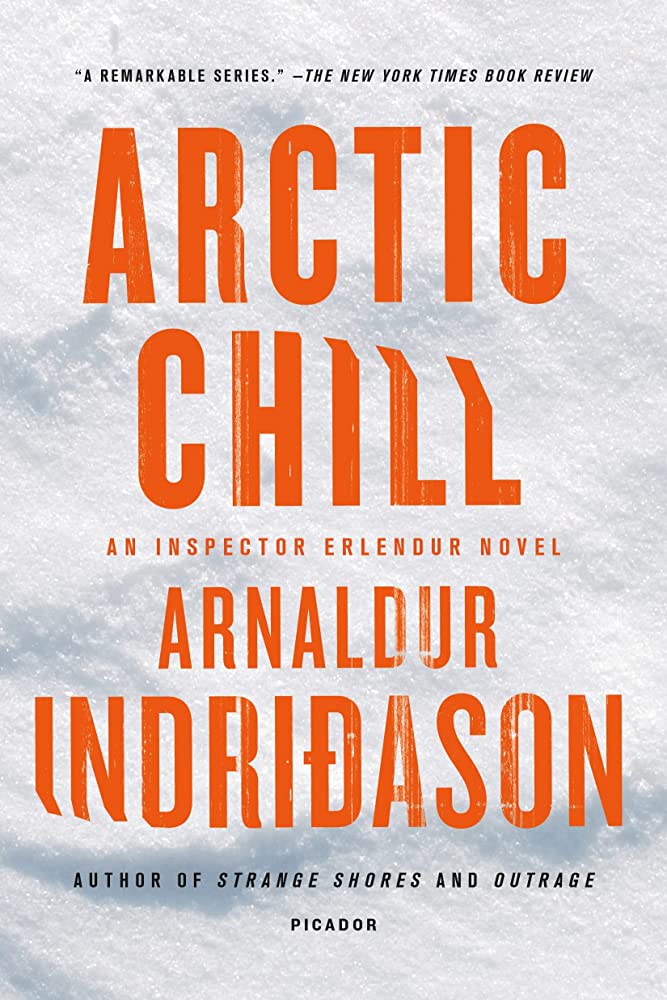According to the Libby app, this book is #5 in the series, but Wikipedia says it’s #7 due to the first two novels having never been translated into English (yet). In any case, this was my favorite installment so far in this excellent series.
The previous books have all focused, in some way, on events that took place decades prior. That choice is an effective strategy for this genre of fiction. In addition to providing an interesting back-and-forth between chapters set in the past — from the perspective of someone long dead or (even more intriguingly) still living with a terrible secret — to chapters set in the present, where Erlendur is putting the pieces together. Often, new information is revealed to us in those “past” chapters while Erlendur remains in the dark. It makes for a compelling read.
Arctic Chill, though, was different:
Erlendur and his team investigate the murder of a young Thai boy, found frozen in his own blood one midwinter day outside a rundown apartment block. The crime may be racially motivated and the team soon uncovers some unpleasant truths about modern Icelandic society.
Synopsis from Wikipedia
This book is about modern Iceland, where an increase in immigration from eastern Europe, Asia, and elsewhere has led to a predictable rise in xenophobia, racism, and nativism. Because the victim’s mother, Sunee, is a Thai immigrant and does not speak English or Icelandic, the detectives need to rely on a translator to communicate with her. While mourning the loss of one child, Sunee is obviously concerned for the safety of her living son, the victim’s older brother. If the crime was indeed racially motivated, if she is living in a society that is hostile to people like her, who can she trust? Why would she trust anyone, even a detective?
While revealing information slowly as usual, the book covers a lot of ground when it comes to the immigrant experience in Iceland. From the limited employment options for immigrants who don’t speak Icelandic; to those “native” Icelanders whose zeal for their country crosses the line into open racism; to the tendency of immigrants from the same area to cluster together for support as well as, perhaps, a temporary reprieve from a vastly different culture.
If I had a criticism of this book, it would be that the central mystery is a bit less complex than in prior books. By virtue of the author keeping this story firmly in the present day, we don’t get the satisfaction of seeing a long-dormant cold case get solved, or an elderly murderer finally meet justice after decades.
That’s OK with me. Having read and enjoyed the other books in the series, I am heavily invested in Erlendur himself — his relationship with his kids, his obsession with uncovering the truth, his love life. That, combined with the irresistible setting in Iceland, is enough to keep me reading for many more installments.
